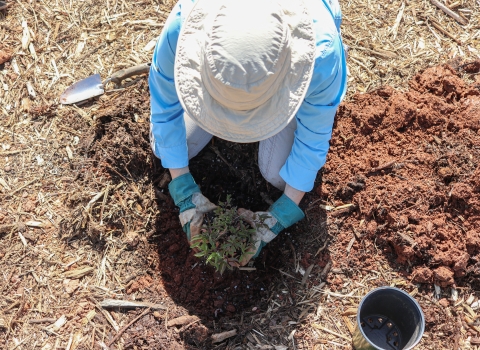Welcome to Yaghanen, the Good Land in the language of the Dena’ina people who have lived here since time immemorial. May your journey into these magnificent canoe systems be a unique and life-enhancing experience. – Andy Loranger, Kenai Refuge Manager
Your paddle dips into the smooth surface of the water as you steer a canoe from the edge of a large lake into a narrow, twisting waterway through the boreal forest. Nearby, a loon calls through the early morning mist. As you guide your boat through the watery trail, a new vista opens in front of you: another lake, this one with a family of swans and a moose browsing in the wetland meadow nearby. The largest city in Alaska is just two hours away, but you’ve found a place of peace and connection to wild things… and the lure of going just a bit further to the next lake, and then the next.
A System of Waters
The Kenai Canoe Trail System is a gem for paddlers of all abilities in search of Alaska’s premiere canoe country. One of only three Wilderness canoe systems in the United States, the Swan Lake and Swanson River trails offer a unique way to experience Kenai National Wildlife Refuge. The system features 70 lakes and nearly 120 miles of water and land trails in the northern corner of the refuge, a haven for both people and wildlife.
Moose, otter, eagles, brown and black bear, lynx, wolves, and abundant waterfowl live in the dense forest, wetlands, bogs, and lakes of the Kenai Peninsula lowlands. The canoe trails offer an ideal way to enjoy and travel across this landscape, a chance to find tranquility or challenge, and some of the best opportunities to catch a glimpse of wildlife.
Something for everybody
“It’s a paddler’s paradise… these lakes are off limits to motorized vehicles and aircraft, but they are very accessible, whether for a day trip or an extended backcountry experience. Families, people on a budget, you can get out and really have a wilderness experience close to town,” said Dave Atcheson, author of Canoeing Yaghanen: A Guide to Kenai National Wildlife Refuge’s Swan Lake and Swanson River Canoe Systems.
“They are well worth the effort. There’s something for everybody and every ability, whether for a family get-away or for hardcore adventurers who want to get out to the furthest reaches of the system.”
People can enjoy the trails year-round, either by paddling, skiing, or sometimes even Nordic skating if the conditions are right. Activities include wildlife viewing and photography, camping, enjoying some solitude, and fishing for trout and char.
Charting your route
You can access the canoe trails from the Swanson River Road near Sterling, Alaska. Both trails have a combination of water and land portages, with some portages requiring an extensive carry over land in hilly terrain.
The Swan Lake canoe trails have two road-adjacent lake entrances, connect 30 lakes, and include a potential route onto 17 miles of the Moose River.
The Swanson River trail connects 40 lakes and 46 miles of the Swanson River, and has the potential for greater difficulty and challenge, with some of the most remote lakes in the system and somewhat technical sections of the Swanson River.
Beginners can easily access and practice paddling on the closest lakes within both trail systems. If you are new to paddling, plan for a day trip or overnight camping trip and explore within your comfort level.
For those seeking more challenge and longer trips, consider a multi-day or week-long route in a large loop or with side trips out to the distant reaches of the system.
More information
Prospective paddlers can contact the Kenai Refuge Visitor Center in Soldotna for more information about the canoe trails, and can also find Atcheson’s guide in the Visitor Center bookstore. The book provides insight, tips, history, and route maps for canoe system paddlers, and was published in collaboration with the refuge and in partnership with Alaska Geographic. It was recently awarded Publication of the Year by the Public Lands Alliance.
More on what to expect and canoe system regulations.
Essentials for traveling in Alaska's bear country






